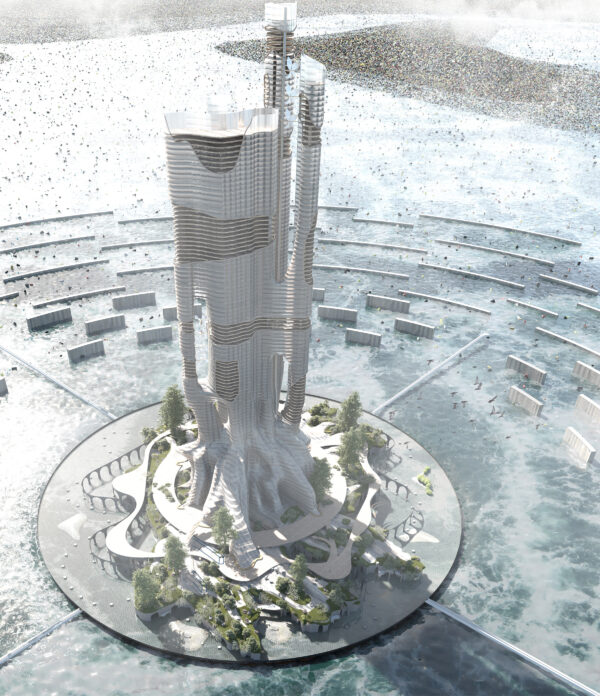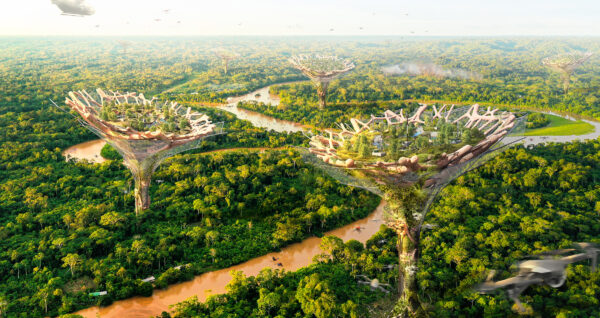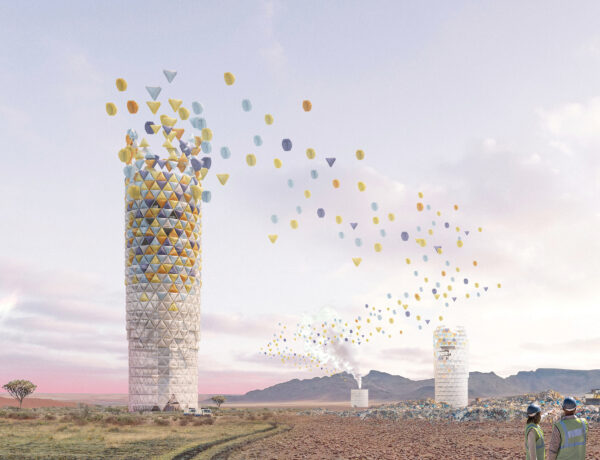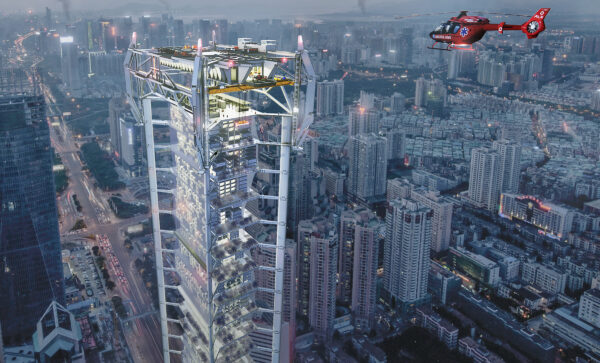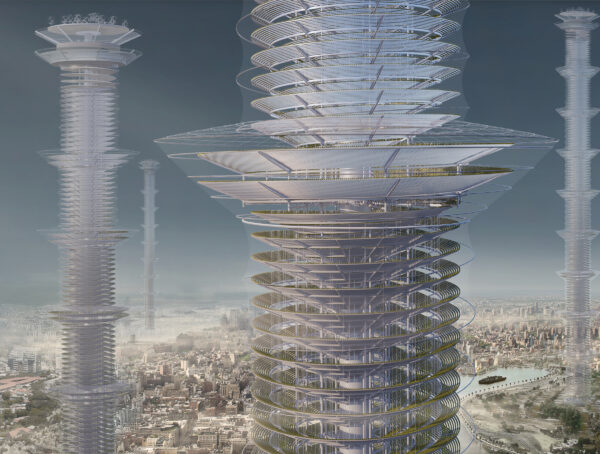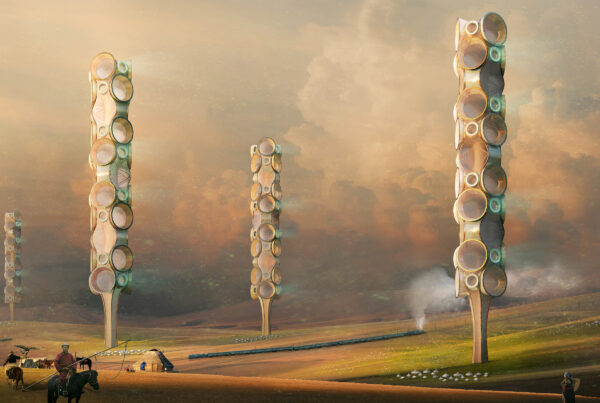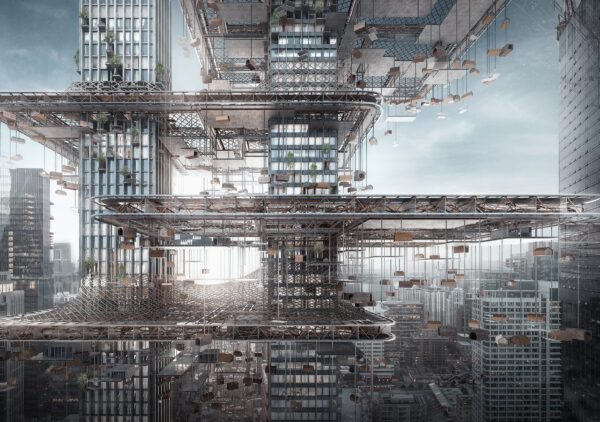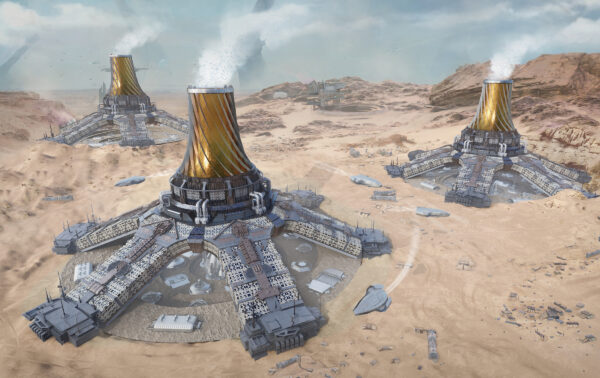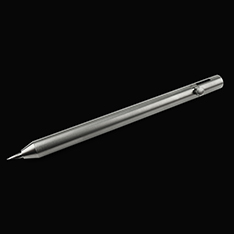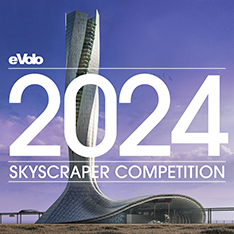Second Place
2023 Skyscraper Competition
Dennis Byun, Harry Tse, Sunjoo Lee
New Zealand
The Great Pacific Garbage Patch and global oil spill have been accumulating in the Pacific Ocean for decades. In recent years, the effects of this environmental disaster have become increasingly visible, with reports of dead marine life washing up ashore with stomachs full of plastic waste.
While many efforts are underway to reduce plastic waste and oil spills, such as recycling programmes and the use of biodegradable plastics, we propose a bold new idea that takes plastic recycling to new heights.
The skyscraper would be a shining example of innovative and sustainable architecture that addresses the problem of plastic pollution while also promoting biodiversity and wildlife conservation. The building’s exterior facade would be made entirely of recycled plastic sourced from ocean waste. But the true innovation of this idea lies in repurposing rubbish into reinforced plastic as a new building material. The once hazardous small plastic bits will be moulded into a solid structure you can no longer consume or entangle, instead inhabit. Thus re-creating a safer environment for sea animals and nature.
The tower is designed to move with the rubbish gyres (garbage patches) to collect and recycle its content. The movement of the gyres is primarily driven by ocean currents and wind patterns, so the organic facade and curved tower will naturally shift with the current if positioned near any major rubbish gyres. All the rubbish is sorted and taken to a material factory to be repurposed in the construction of the tower. The tower works in tandem with time, with the continuous construction of the plastic bird nesting tower and the cleaning of the ocean allowing a new mass breeding of once-endangered marine life. Read the rest of this entry »

